1. About Hanoi Hilton Prison and its different names
Hanoi Hilton Prison symbolizes one of the darkest times in Vietnam’s history when revolutionary Vietnam rebels are kept and tortured brutally. Today, it is a significant tourist attraction luring thousands of visitors to sightseeing and learning more about the dark history of Vietnam during the war.
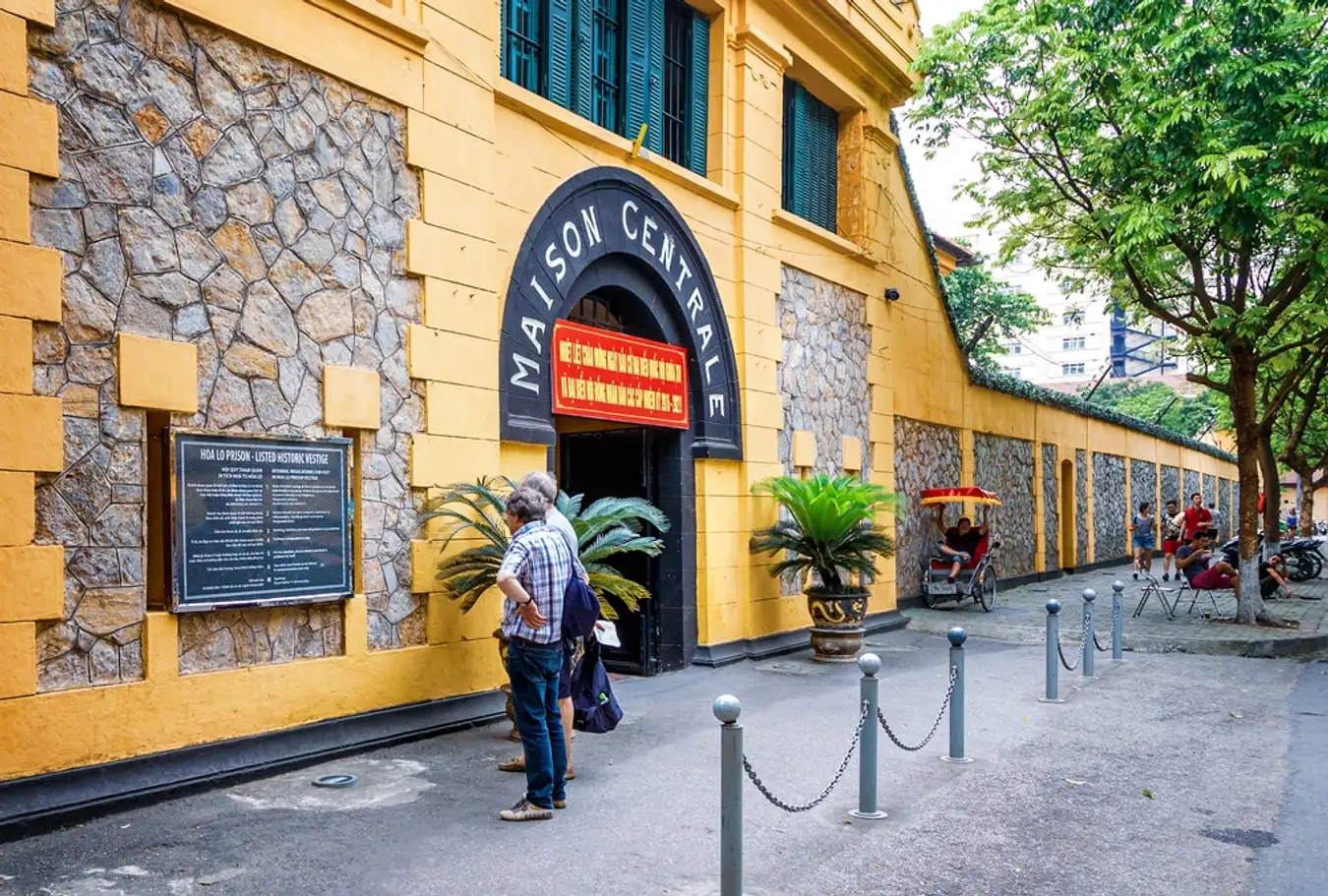
As a historical relic, it stirs up strong emotions in visitors when they see artifacts including the guillotine, flight suit and parachute used by John McCain. Soldiers who survived the war all describe Hanoi Hilton Prison as hell on Earth. Come here, you will prove to yourself that’s cruel and dreadful truth!
For Vietnamese, Hanoi Hilton Prison is commonly called Hoa Lo Prison – “fire earthen stove” because the savage prison is located on Hoa Lo Street where wood stoves and coal-fire stoves were sold in pre-colonial times.
US people call it Hanoi Hilton because the prison used to capture many US prisoners of war (POW). French people refer to it as Maison Centrale or Central Prison.
- Address: No. 1 Hoa Lo, Tran Hung Dao, Hoan Kiem District, Ha Noi
- Phone: 024.39342253 / 024.39342317
- Email: bqldtnthl_sovhtt@hanoi.gov.vn
- Opening times: From 8h00 to 17h00 every day (Including festivals and holidays)
- Daily ticket price: 30 000 VND (~$1.2) for adults, 15 000 VND for students
- Audio Guide: 100 000 VND (~$4)
2. History of Hanoi Hilton Prison
In early 1985, along with the development of revolutionary movements throughout Hanoi, the number of prisoners rocketed. Then, in 1986, the French colonial government decided to build a central prison in Hanoi. They called it “Maison Centrale” (or “Central House) and kept Vietnamese prisoners here to routinely torture them.
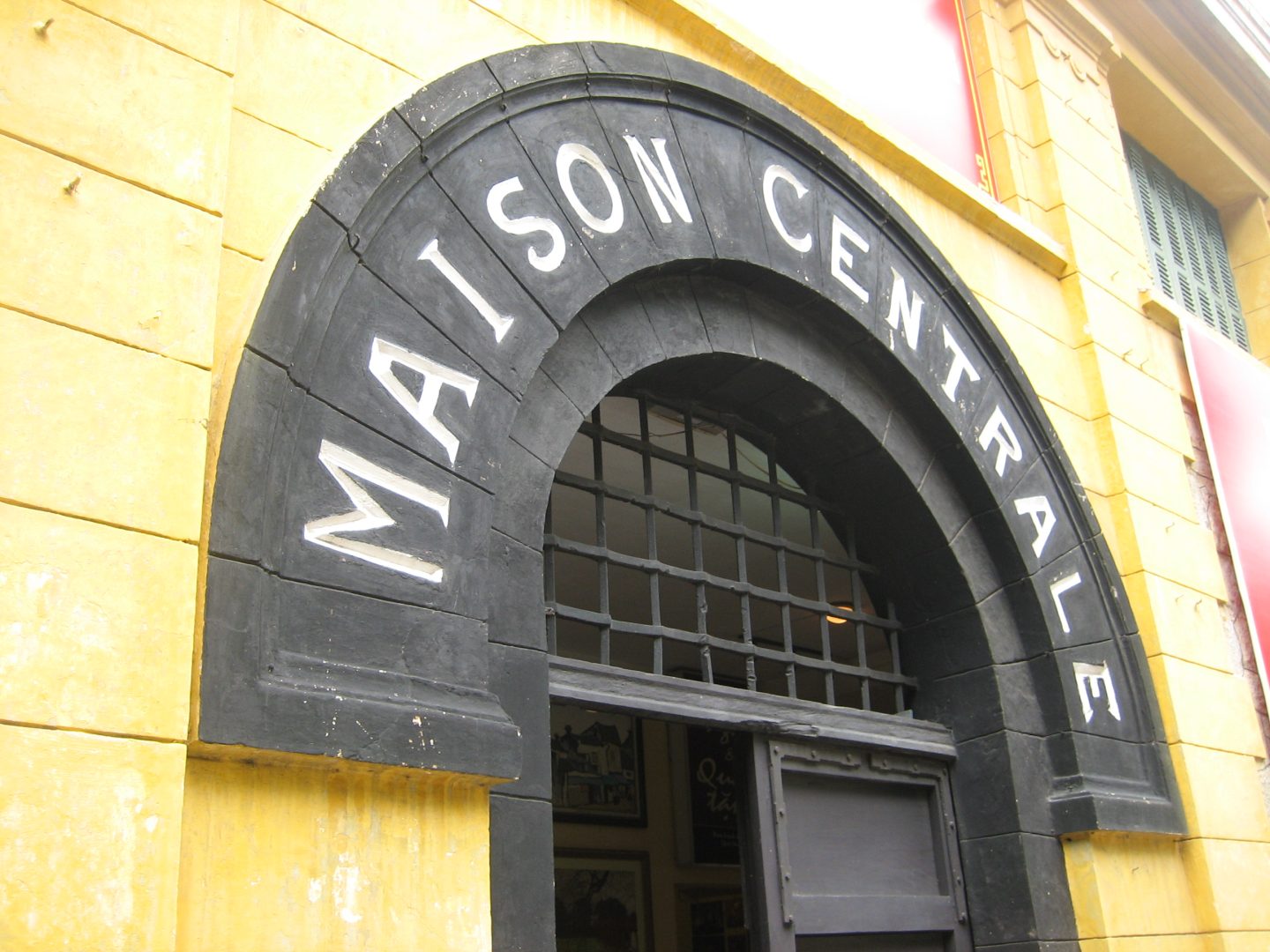
The Hanoi Hilton Prison badly maltreated prisoners and tended to break their wills, but no matter how cruel it was, patriotism was still alive. Following the defeat at the Battle of Dien Bien Phu and the 1954 Geneva Accords, the French left Hanoi and the prison was transformed into an educational and graphic museum for revolutionary doctrine and activity.

Listening to the audio guide and strolling around, you will see hundreds of political prisoners kept with fetters. Also, there are rooms displaying artifacts, inmates’ living utensils and clothes.
3. Structure of Hanoi Hilton Prison
The construction of the Hanoi Hilton Prison was approved by Paul Doumer – Governor-General of French Indochina. The total area including the adjacent roads is 12980 m2. Its capacity was expanded from 460 inmates to 600 in a 1913 Renovation and even captured 1430 prisoners in 1933. However, in 1933, ¾ of the Hanoi Hilton was replaced to build the central tower of Hanoi, so only 2434 m2 remains.
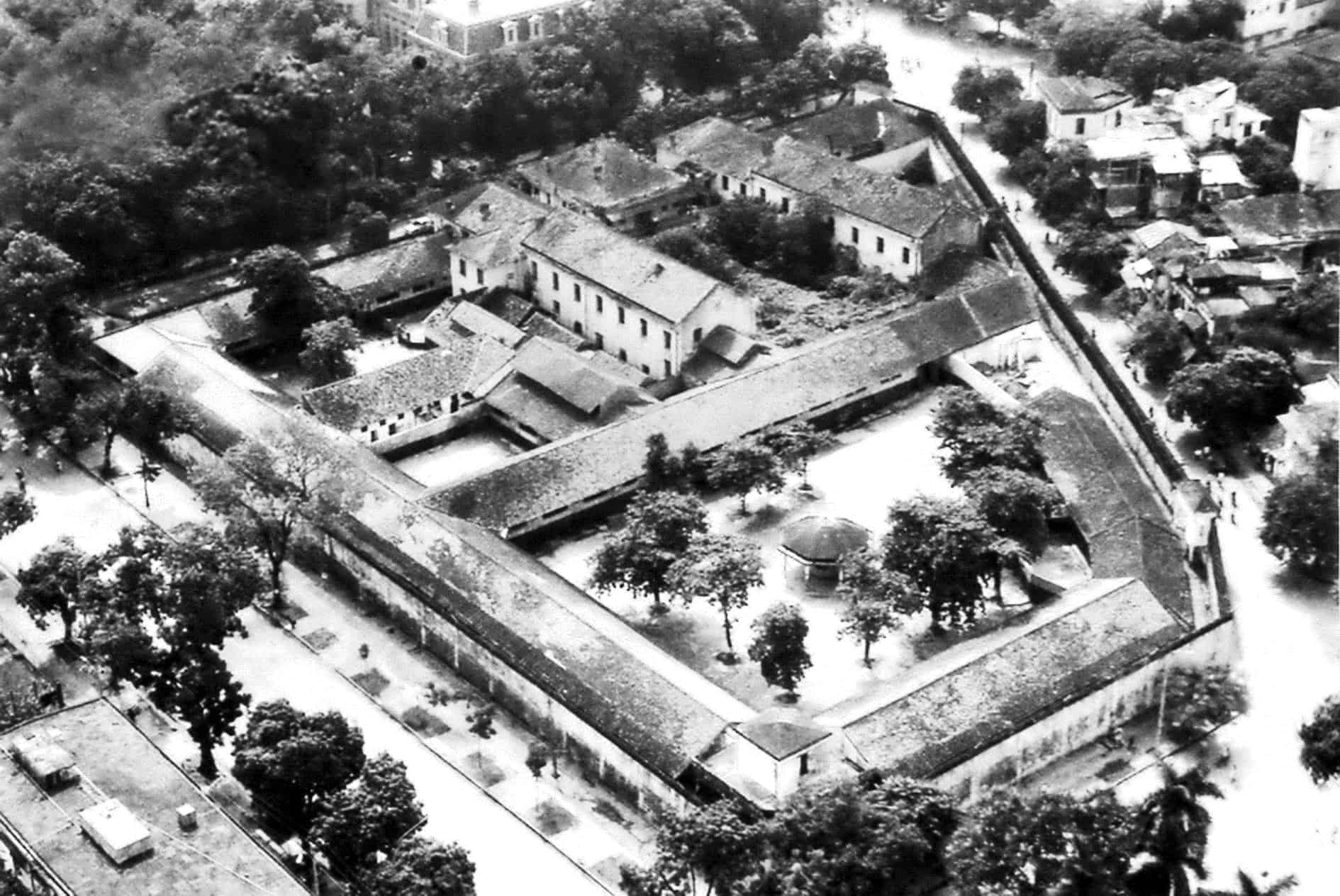
Externally, the French colonial government built very tall walls and at the top, there are numerous pieces of broken glass restraining people from escaping.
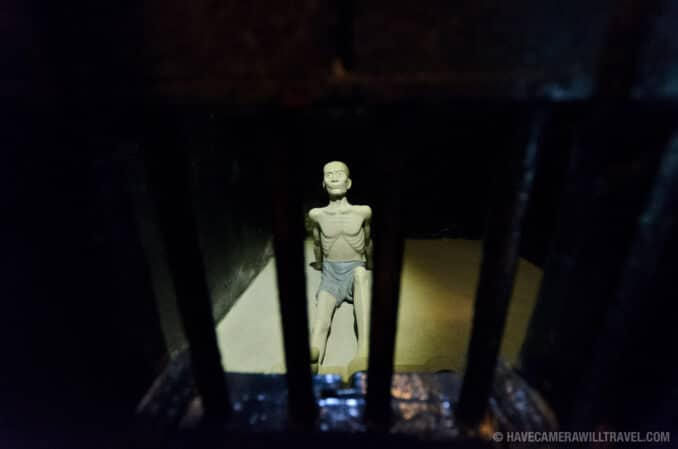
The Hanoi Hilton has 2 main areas: the management area and the prison area. About the prison area, there are Prisons D, E, Cachot, Guillotine and death row cells.
Prison D, connected to Prison E, has tile roofs, no ceiling, and solid walls. The wall, closed to the roof carved a few small boxes to get air. The summer here is sweltering and the winter is frozen. This place displays antifacts and prisoners’ living utensils. You can see prisoners’ clothes also. The clothes are made of raw fabric and sewn an M.C which stands for “Maison Centrale”.
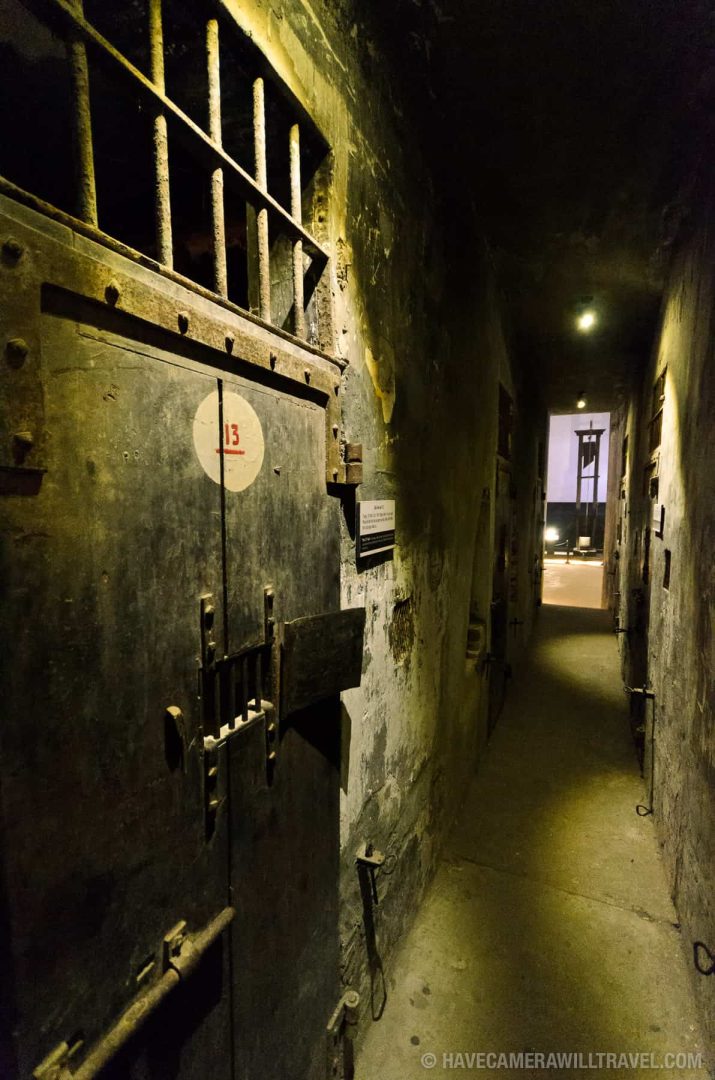
Prison E is the place where a part of prisoners are kept. The French colonials called them POW (prisoners of war). The roof is solid and it is impossible for prisoners to escape. Nowadays, it is restored to resemble the original models and displays 59 artifacts including prisoner’s bed, water tank, latrine pedestal and prisoner statue. When you come here, you will also see completely open-air toilets and there is no private space.
The Cachot area also known as dungeon and “Hell of Hell”, a place to detain those who are punished for violating the prison’s rules. This area is covered by cramped, dark cells. It has a cement floor, the head is slightly lower than the foot by 30 cm. Prisoners are shackled there and they were suffered from a barbaric form of confinement.
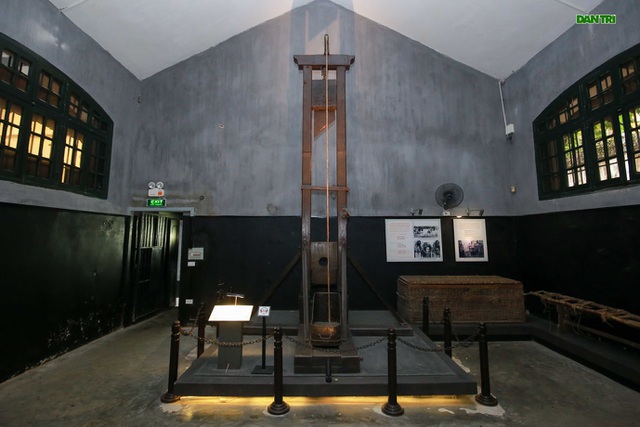
Prison for female political prisoners who are considered dangerous by the French colonials. They suffered the same torture as male prisoners. Next to this room is a place for women with children or pregnant women.
Outside the Hanoi Hilton, there is a special tree, which is the Indian almond tree. It is a historic evidence witnessing the lives of patriotic prisoners. In fact, it saved the lives of prisoners and provided them with necessary materials to use as learning and living tools.

Right next to the Indian almond tree are two sewer gates in the yard of Prison E. Political prisoners and death row escaped prison in 1945 and 1951. In March, 1945, almost 100 prisoners were escaped through two sewer gates, but only 5 people succeeded.
4. Things to know before you visit Hanoi Hilton Prison
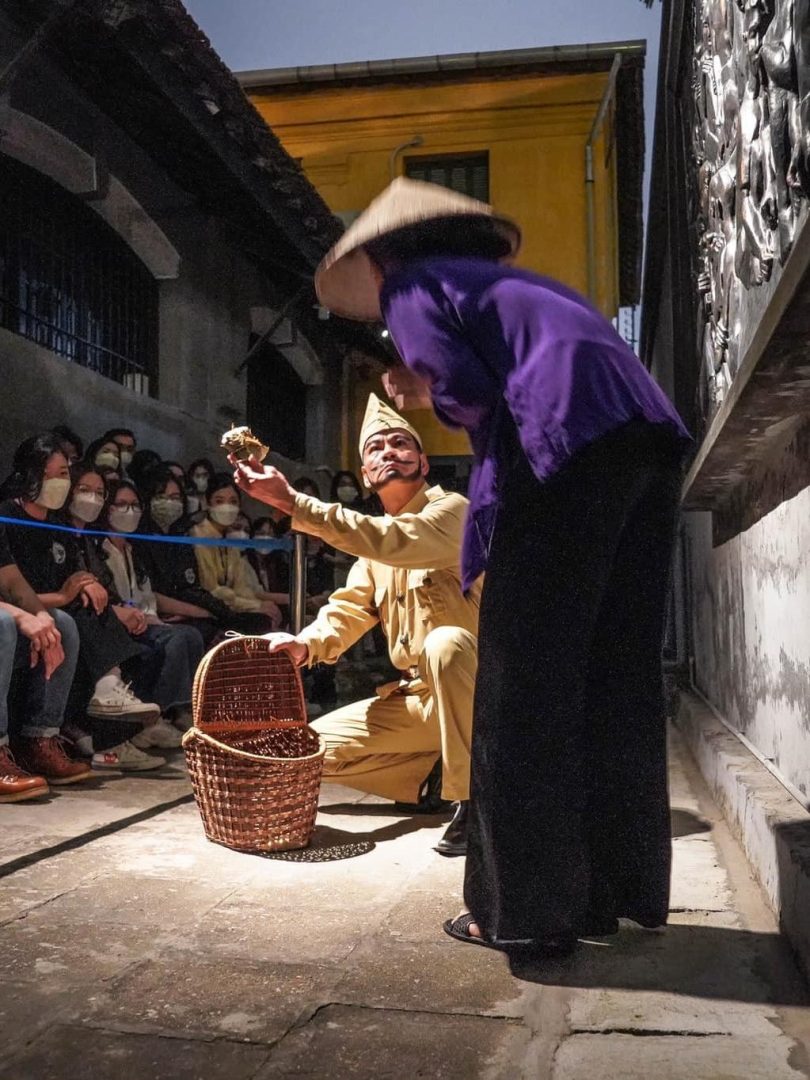
- Some displays are gruesome, so it is not recommended for children
- Prisoners are kept with an iron rod bent along the shackle hole
- Wall of the Hanoi Hilton has two colors, black with tar on the bottom half and white lime on the top half. This makes it hard to breathe and make the summer scorching hot and the winter extremely cold.
- Audio guides are available in English
- Your emotion and feelings may run high when visiting the Hanoi Hilton
- Pay great attention to safety guidelines and fire prevention while visiting
- Do not touch and move objects in the prison
- Visitors can come to the Hanoi Hilton at night, but the charge is higher.
5. How to get to Hanoi Hilton Prison
Located near the French Quarter, you can walk here from Hoan Kiem Lake within 15 minutes. Besides, it is easy for tourists to reach Hanoi Hilton by motorbike; taxi or even bus. There are several buses with stops nearby Hoa Lo, including No.2, 9, 40, and 49; then you take a short walk to the museum with the sign “Maison Centrale” at the entrance of a bright yellow building.
Bus 32: Giap Bat – Nhon bus station
- Hours of operation: from 5am to 10pm.
- Price: 7,000 VND/ticket.
- Running frequency: from 5 to 20 minutes/trip.
Bus 38: Nam Thang Long – Mai Dong bus station
- Hours of operation: from 5am to 9pm.
- Price: 7,000 VND/ticket.
- Running frequency: from 15-20 minutes/trip.
Route 41: My Dinh bus station – Gia Lam bus station
- Hours of operation: 5am – 9pm.
- Price: 7,000 VND/ticket.
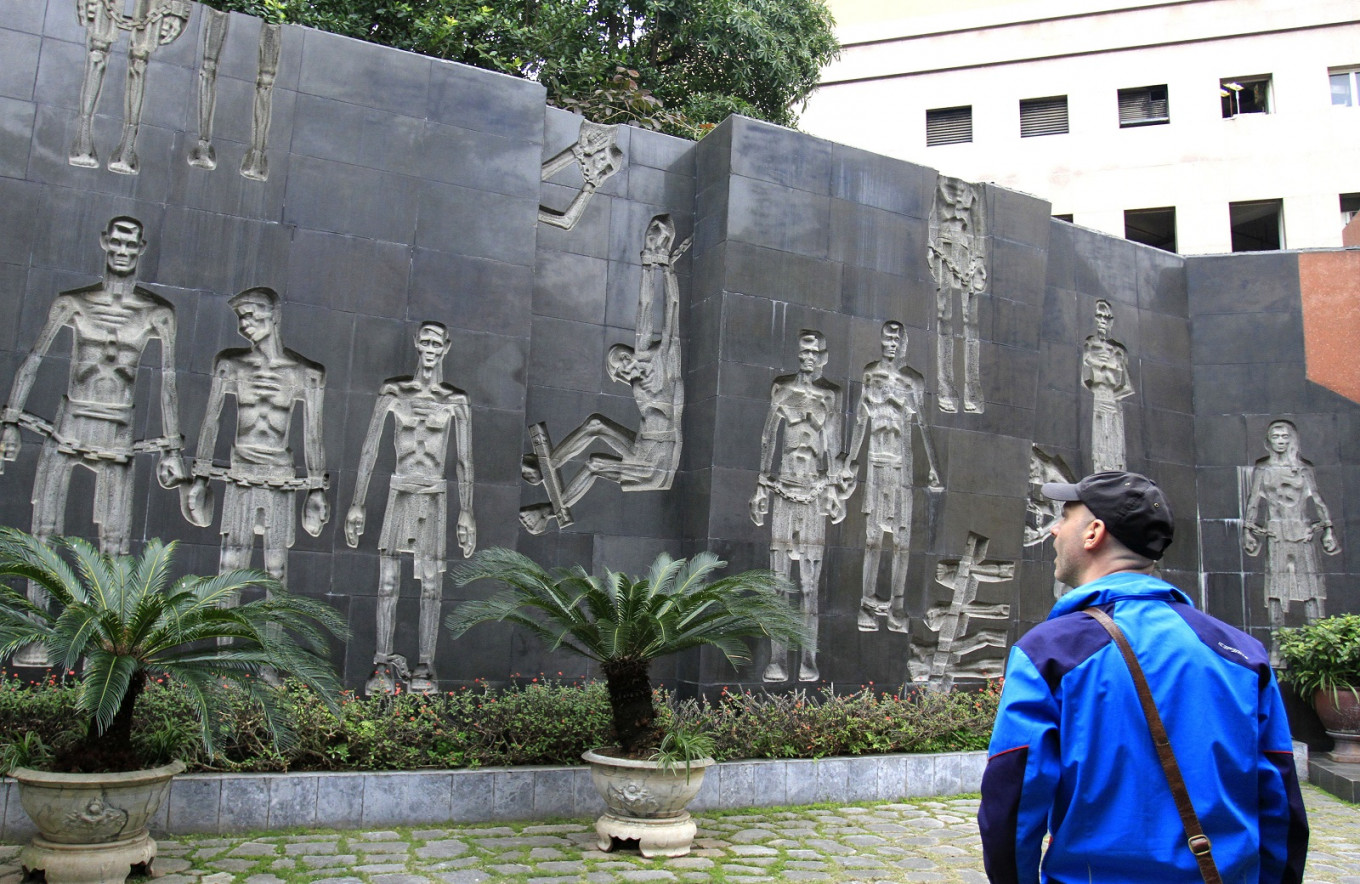
The best experience will be recommended with a private car/van and an escorted tour guide for a better grasp of the history. Please contact Metta Voyage for further information and assistance.
Contact us
Website: mettavoyage.com
Email: info@mettavoyage.com
Hotline 24/7: + 84 989 383 572

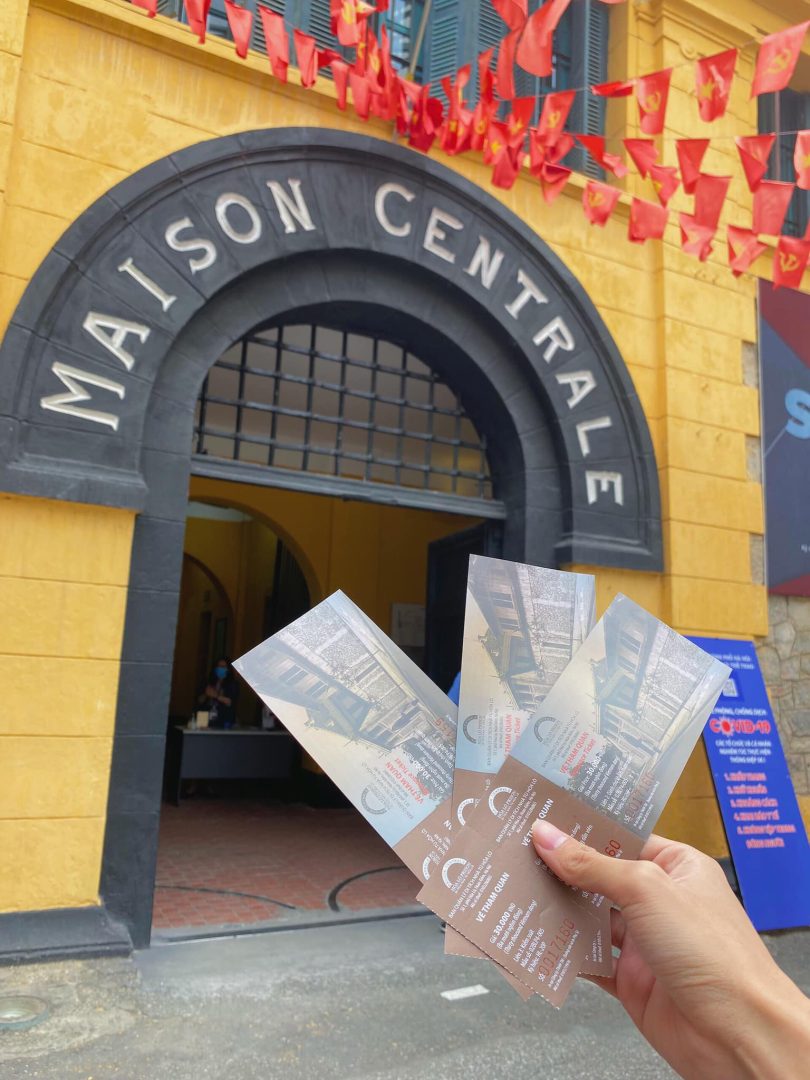

0 Comment